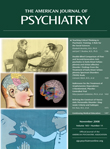To the Editor: In the June 2008 issue of the
Journal, Adrienne Einarson, R.N. et al.
(1) concluded that the existing evidence does not suggest an association between the use of paroxetine during pregnancy and congenital cardiovascular defects. Their conclusion was based on an observational study and five previous cohort studies. The authors stressed the need to treat depression during pregnancy and stated that if appropriate treatment includes paroxetine, the findings of their study “should reassure women and their health care providers” (
1, p. 752). This endorsement is at odds with regulatory warnings
(2) .
The design and reporting of the study raise questions pertaining to claimed results. No data are provided regarding 1) baseline characteristics of exposed women and unexposed comparison women, 2) whether the analysis is intention-to-treat or per protocol, 3) loss to follow-up, or 4) proportion with evaluable outcomes. Both the exposure levels and procedures to select comparison women were unclear. Additionally, the outcome assessment was not blinded to exposure, and treatment for ambiguous diagnoses was unclear.
Einarson et al. included a secondary analysis of five cohort studies of paroxetine exposure during pregnancy. Although four of these studies included comparison groups and two reported significant increases in congenital malformation rates among exposed women
(3,
4), these data were omitted. The authors reported a subset of available observational studies, and the selection criteria were unclear.
If harm from paroxetine use during pregnancy cannot be excluded based on the evidence provided, can benefit be assumed? To our knowledge, no randomized controlled trial has examined whether paroxetine treats depression during pregnancy more effectively than placebo, psychotherapy, or alternative treatment/therapy. Einarson et al. stated that randomized controlled trials cannot be conducted “for obvious reasons” (
1, p. 751). We question the assumption that treatments should be offered to pregnant women with less evidence of benefit than those treatments offered to nonpregnant women. More, not less, caution is needed to ensure that potential benefit outweighs potential harm.
The authors also cited a study published in
the Journal of the American Medical Association (
JAMA )
(5) reporting high rates of depression relapse after discontinuation of paroxetine during pregnancy. The study was not randomized, neither patients nor treating doctors were blinded, and patients were briefed about the “risk of depressive relapse associated with discontinuation of antidepressant therapy.” Additionally, no attempts to distinguish relapse from drug discontinuation syndrome were described.
Neither the safety nor effectiveness of paroxetine treatment during pregnancy has been established. Since studies conducted in a range of settings have indicated potential harm, should we not adopt a cautious approach to further exposure, rather than requiring certainty about harm?

